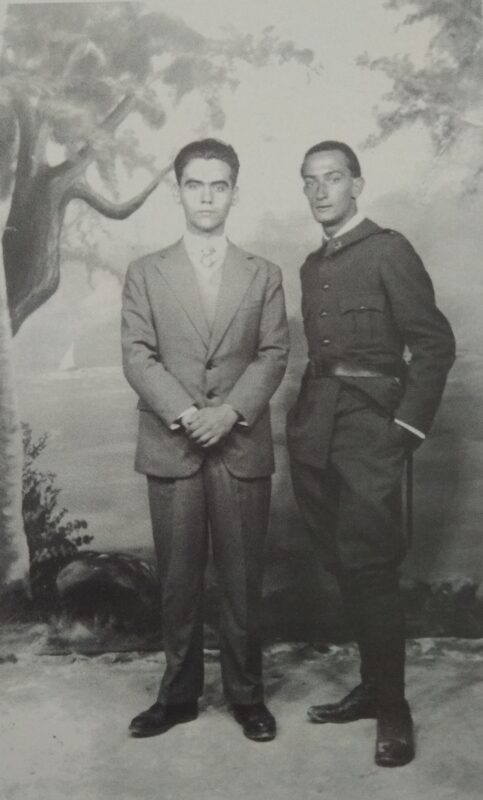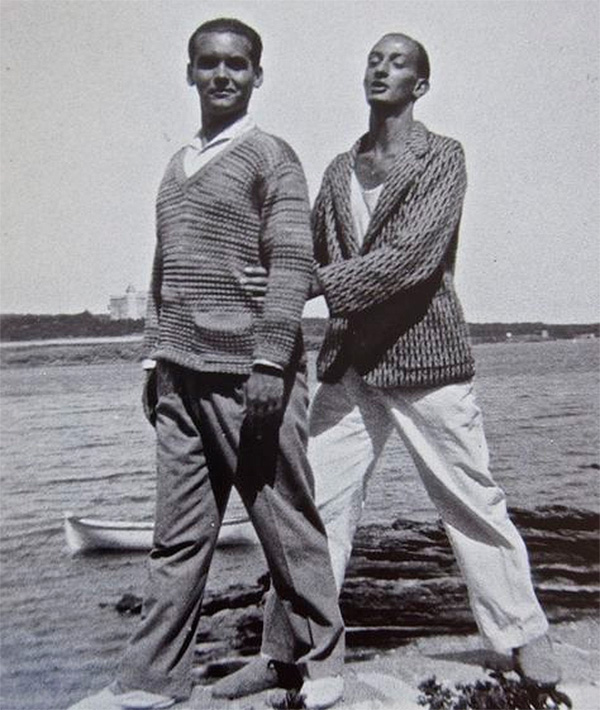“Oh Salvador Dali, of the olive-colored voice!
I do not praise your halting adolescent brush
or your pigments that flirt with the pigment of your times,
but I laud your longing for eternity with limits”.
Federico García Lorca, “Ode to Salvador Dalí”.

Born today, on June 5th, 1898, in the small agricultural village of Fuente Vaqueros, near Granada, in Spain, the poet Federico García Lorca was one of Salvador Dalí’s most influential surrealist companions.
Considered the greatest Spanish poet and playwright, Lorca began to frequent the group of avant-garde artists, including Salvador Dalí and Luis Buñuel, during the 1920’s. Known as the “Young Promises of ‘27”, the group introduced Lorca to Surrealism, a literary and artistic movement that profoundly influenced his poetic production.
Salvador Dalí and Federico García Lorca met in 1923 at the Residencia de Estudiantes in Madrid. The Catalan artist was 19 years old while the Spanish poet was 25. An immediate emotional and intellectual bond was established between them, enriching both during their important period of artistic and cultural formation.
Their relationship, born as a friendship and evolved into a platonic love filled with admiration and respect, has been a subject of study and interest for many years.
García Lorca was known for his shy personality and declared homosexuality and was assassinated in 1936 during the Spanish Civil War. Dalí was in London when he received the news.
During their years at the Residencia de Estudiantes, Lorca was beginning his relationship with the world of plastic arts and theater, while Dalí was influenced by detailed news about the artistic revolution happening in Paris and was interested in delving into Cubist painting. Neither of them went unnoticed at the Residencia. Dalí, in fact, was permanently expelled in 1926.
In the years immediately following, Lorca visited Dalí in Catalonia and subsequently exchanged letters, although increasingly sporadically. Their correspondence was one of the most useful tools for understanding their friendship.
Federico García Lorca dedicated a poem to the painter, “Ode to Salvador Dalí”, while Salvador Dalí painted “San Sebastián” in 1927, dedicating it to the poet. In the same year, Lorca staged the successful play “Mariana Pineda” at the Goya Theater in Barcelona, with elaborate sets by Salvador Dalí.
Fate ended the collaboration and friendship of Dalí and Lorca, and after the tragic death of the poet, Dalí painted “The Endless Enigma” in 1938, dedicating the canvas to his friend and poet whom he could not save from the Spanish war.
The friendship between Lorca and Dalí, based on profound mutual admiration and relentless creative exploration, continues to inspire and move. Their letters and works are testimonies of a bond that, despite misunderstandings and distances, left an indelible mark on the history of art and literature.

Images: Salvador Dalí with Federico García Lorca.

